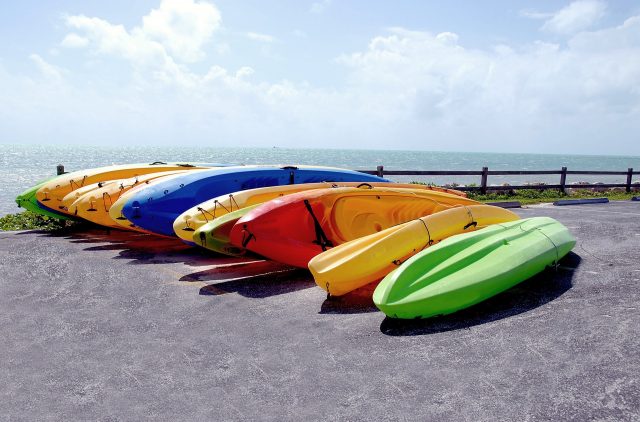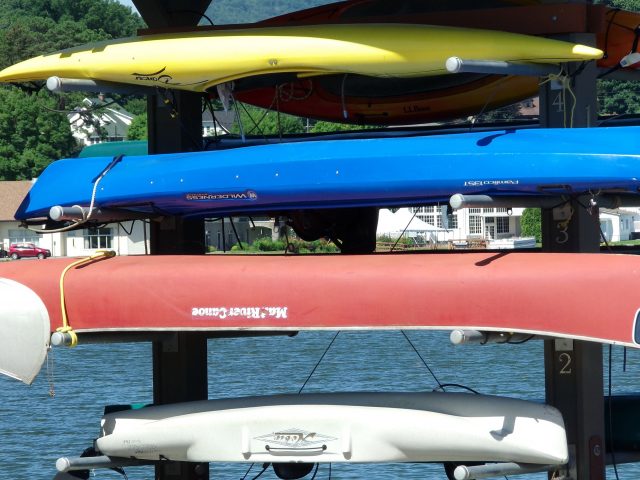Choosing a plastic or composite kayak
Just like any other sports equipment, kayaks are available in a variety of different shapes, sizes and range in prices; some costing a few hundred dollars, while others reach into the thousands. This presents kayaking beginners with the dilemma of choosing the right kind of kayak for their planned adventures. The difference and range of price make this difficult.
This difference is primarily due to the material that goes into making the kinds of kayaks and canoes, which are designed to perform efficiently in varying situations. It is therefore very crucial for a beginner to understand the difference between a plastic kayak and one made of fiberglass material.
Another thing that the beginner needs to understand is that, depending on the material that goes into making a kayak, its functionality and durability will be different under certain conditions.
Different types of kayaks and their material
If you’re planning to take on whitewater kayaking, recreational kayaking, or any other kind of kayaking, plastic is your best option; unless you are inclined toward sea kayaking and touring. The low cost of the plastic kayak and its longevity take it to the top of the list of the most desired kayak throughout the world. In many types of kayaking, your only real option will be to go for a plastic kayak. Sure, you can opt for fiberglass, but professionals don’t recommend it.

However, when it comes to kayak touring and sea kayaking, there are more options at your disposal, such as carbon fiber, fiberglass, wood, and even Kevlar. Here is the tricky part, though: all of the above-mentioned kayaks are way more expensive than a plastic kayak. Not only that, they lack the durability of a plastic boat, although, they are lighter and faster than plastic kayaks. What contributes toward the lack of durability is the somewhat fragile makeup of fiberglass kayaks. And although when on display in a kayaking shop they look really graceful and aesthetically pleasing, don’t be lured into buying a more expensive, but less suitable boat.
Factors regarding durability and material of kayaks
Despite the durability and weight of a kayak being among the more important factors involved in selecting which material is used in your boat, there are other elements in the equation. The location where you are planning on kayaking also matters when it comes to choosing the material for your kayak.

If you are going to launch your kayak from rocky beaches and will be paddling around rocky waters, your kayak needs to be made out of material that can withstand the banging and hammering it’ll inevitably receive; then fiberglass might not be your best option in this situation. Besides, your composite kayak needs much more attention and care while outside the water, too, such as storage and taking it from storage to the launch site.
Price matters

Undoubtedly, one of the biggest factors in choosing the right material of your kayak, at least for most of the boaters, has to do with the financial aspect. A plastic kayak normally costs only a fraction of the price of a fiberglass boat. For sure it is much cheaper, but that does not mean the quality is compromised. It is not like our normal everyday experience, where cheap means short-lived and poor quality. Although plastic boats are cheap they can still provide the some of the highest quality types of the kayak.
Buying recommendation for kayak

If you are new to kayaking and have not been taken under the wing of an experienced canoeist, then your best option is to go with a plastic kayak. The initial excitement of getting on the water as soon as possible leads many beginners to buy the most expensive kayak out there, and usually a composite kayak. The problem with the composite boat is that despite being the most expensive of the lot, these aren’t so durable and get damaged very easily.
Plastic kayaks, however, are cheaper and much stronger than their composite counterparts, giving you enough space to experiment and learn from your early kayaking experiences. On top of that, you can always buy a used plastic kayak, further reducing your cost of buying your first boat. Most plastic kayaks can be easily checked for any significant damages, and chances are the previous owner kept them securely, as plastic kayaks are easier to store and less prone to damage than composite kayaks.

If you have any comments, please drop us a message on our Outdoor Revival Facebook page.
If you have a good story to tell or blog, let us know about it on our FB page. We’re also happy for article or review submissions, we’d love to hear from you.
We live in a beautiful world, get out there and enjoy it. Outdoor Revival – Reconnecting us all with the outdoors.





